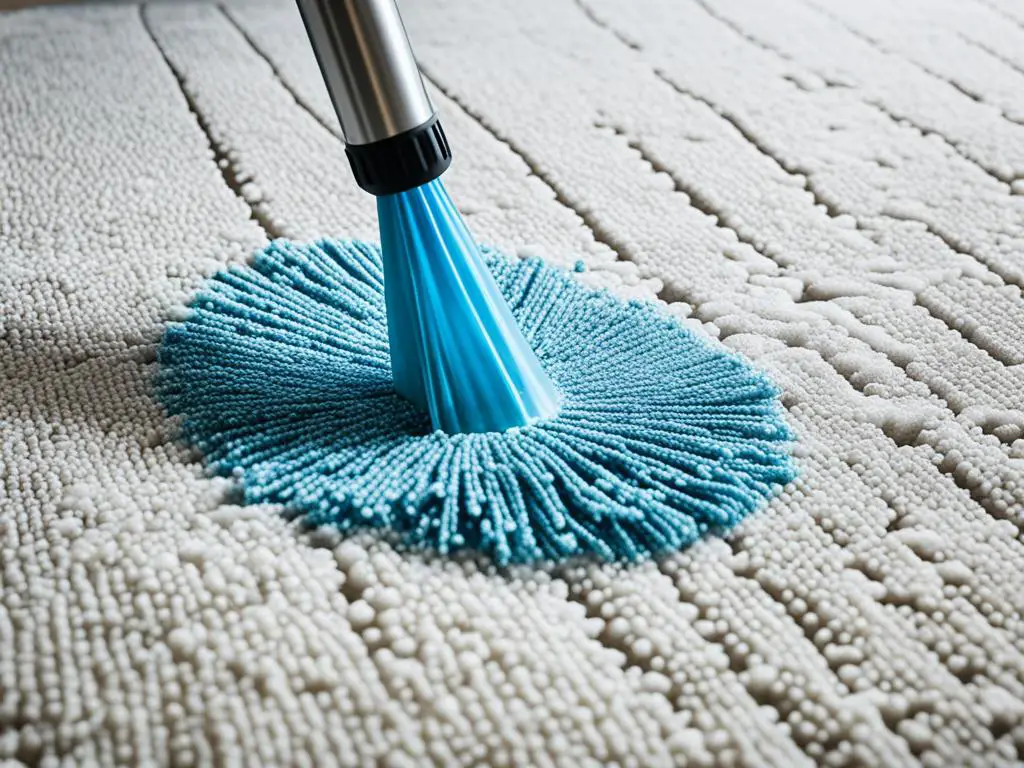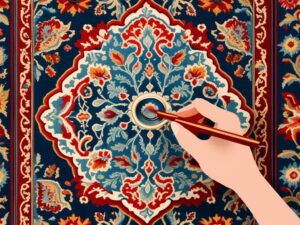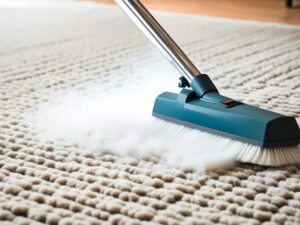Waterproofing your rug is a simple and affordable DIY project that can help protect it from spills, stains, and moisture. By following a few steps and using the right products, you can make your rug water-resistant and prolong its lifespan. Here’s why you should consider waterproofing your rug and how to do it effectively.
Key Takeaways:
- Waterproofing your rug can prevent permanent stains and increase its durability.
- Moisture can lead to mold growth and damage to the rug and flooring.
- Use a fabric seal spray and a waterproof rug pad for effective waterproofing.
- Choose a rug pad made from waterproof materials like rubber, jute, or felt.
- Consider the type of rug and the area it will be placed in when waterproofing.
Why You May Need to Waterproof a Rug
Area rugs, both indoor and outdoor, are constantly exposed to various sources of moisture. Whether it’s accidental spills, rainwater, or high humidity, moisture can wreak havoc on your rugs. That’s why waterproofing your rug is not only a smart choice but also a necessity. By taking the necessary steps to protect your rugs, you can prevent permanent stains, increase their durability, and safeguard your expensive flooring from potential damage.
When rugs absorb moisture, they become vulnerable to mold and mildew growth, leading to unpleasant odors and potential damage to the rug fibers. Waterproofing your rug can help create a protective barrier against these issues, ensuring that your rug remains fresh, clean, and in excellent condition for years to come.
Let’s take a closer look at the benefits of waterproofing your rug:
- Preventing Stains: Waterproofing your rug helps repel spills and liquid accidents, preventing them from penetrating the rug fibers and leaving stubborn stains.
- Protecting from Moisture: By making your rug water-resistant, you guard against the damaging effects of moisture, such as mold, mildew, and odors.
- Increasing Durability: Waterproofing extends the lifespan of your rug by minimizing wear and tear caused by moisture penetration.
Investing a little time and effort into waterproofing your rug can offer significant long-term benefits, saving you money on replacement costs and preserving the beauty of your rugs.
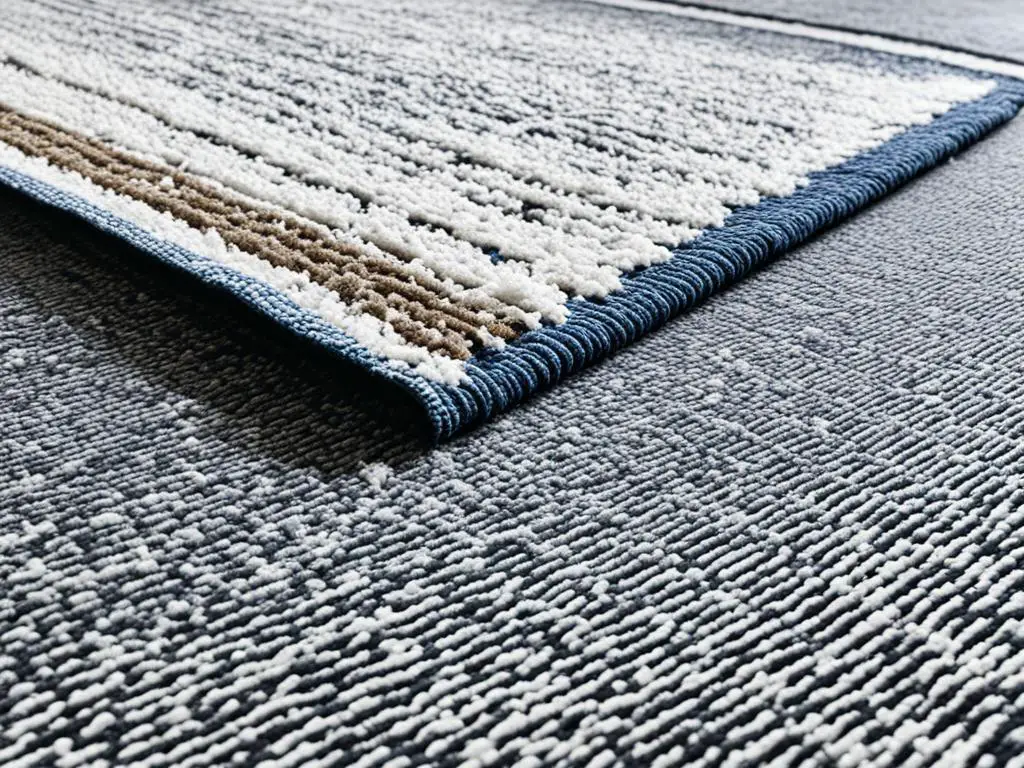
How to Waterproof a Rug
When it comes to protecting your rugs from spills, stains, and moisture, waterproofing is a practical solution. By following a few simple steps and using the right products, you can ensure that your rugs stay in great condition for longer. In this section, we will explore different waterproofing techniques for rugs and guide you through the rug waterproofing process.
Waterproofing Techniques for Rugs
There are several effective techniques you can use to waterproof your rugs. One popular option is to use a fabric seal spray that is specifically designed for waterproofing, such as Scotchgard or Thompson. These sprays create a protective barrier on the upper fibers of the rug, making it water-resistant. Simply follow the instructions on the product and apply the spray evenly to the entire surface of the rug.
Another important step in the rug waterproofing process is to choose a waterproof rug pad. These pads are specifically designed to prevent water from being absorbed by the underside of the rug. Look for rug pads made from waterproof materials, such as natural rubber, jute, or felt. Attach the waterproof rug pad to the rug using a heavy-duty silicone adhesive to ensure it stays in place.
After applying the waterproofing spray and attaching the rug pad, allow the rug to dry for at least 24 hours. This will ensure that the waterproofing products have fully set and are ready to withstand moisture. Once the rug is dry, perform a simple water-resistance test by pouring a small amount of liquid on the surface. If the liquid beads up and runs off the rug, it is effectively waterproofed.
Steps to Waterproof a Rug
- Select a fabric seal spray specifically designed for waterproofing rugs.
- Prepare the rug by vacuuming or cleaning it thoroughly.
- Follow the instructions on the fabric seal spray and apply it evenly to the entire surface of the rug.
- Choose a waterproof rug pad made from materials such as natural rubber, jute, or felt.
- Attach the waterproof rug pad to the underside of the rug using a heavy-duty silicone adhesive.
- Allow the rug to dry for at least 24 hours to ensure the waterproofing products have fully set.
- Perform a water-resistance test by pouring a small amount of liquid on the surface of the rug. If the liquid beads up and runs off the rug, it is effectively waterproofed.
By following these simple steps, you can successfully waterproof your rug and provide it with long-lasting protection against spills and moisture.
Choosing the Right Rug Pad for Waterproofing
When it comes to waterproofing your rug, selecting the right rug pad is crucial. The rug pad plays a significant role in preventing liquids from seeping through the rug and protecting the flooring underneath. But with so many options available, how do you know which rug pad is best suited for waterproofing your rug? Let’s explore some of the top rug pad options for water resistance.
Best Rug Pads for Waterproofing
1. Anchor Grip: This rug pad offers excellent grip and cushioning, making it an ideal choice for waterproofing. It is made from a waterproof material that effectively prevents liquids from penetrating the rug and reaching the floor. The Anchor Grip rug pad provides a secure foundation for your rug and helps to extend its lifespan.
2. Cloud Comfort 7/16: If you’re looking for both comfort and moisture barrier properties, the Cloud Comfort 7/16 rug pad is a fantastic option. Its luxurious plushness adds extra cushioning to your rug while effectively protecting it from water damage. This rug pad is made from high-quality materials that repel liquids and maintain the rug’s water resistance.
Selecting a Rug Pad for Water Resistance
When choosing a rug pad for water resistance, consider the following factors:
- Material: Look for rug pads that are made from waterproof materials such as natural rubber, jute, or felt. These materials provide an effective barrier against liquids and help to maintain the rug’s water resistance.
- Size: Ensure that the rug pad is slightly smaller in diameter than your rug. This allows for proper draping and prevents the rug pad from being visible beyond the edges of the rug.
By selecting a rug pad that is specifically designed for water resistance, you can ensure that your rug remains protected from moisture and spills. Whether you choose the Anchor Grip or Cloud Comfort 7/16, these rug pads are excellent options for maintaining the water resistance of your rug.
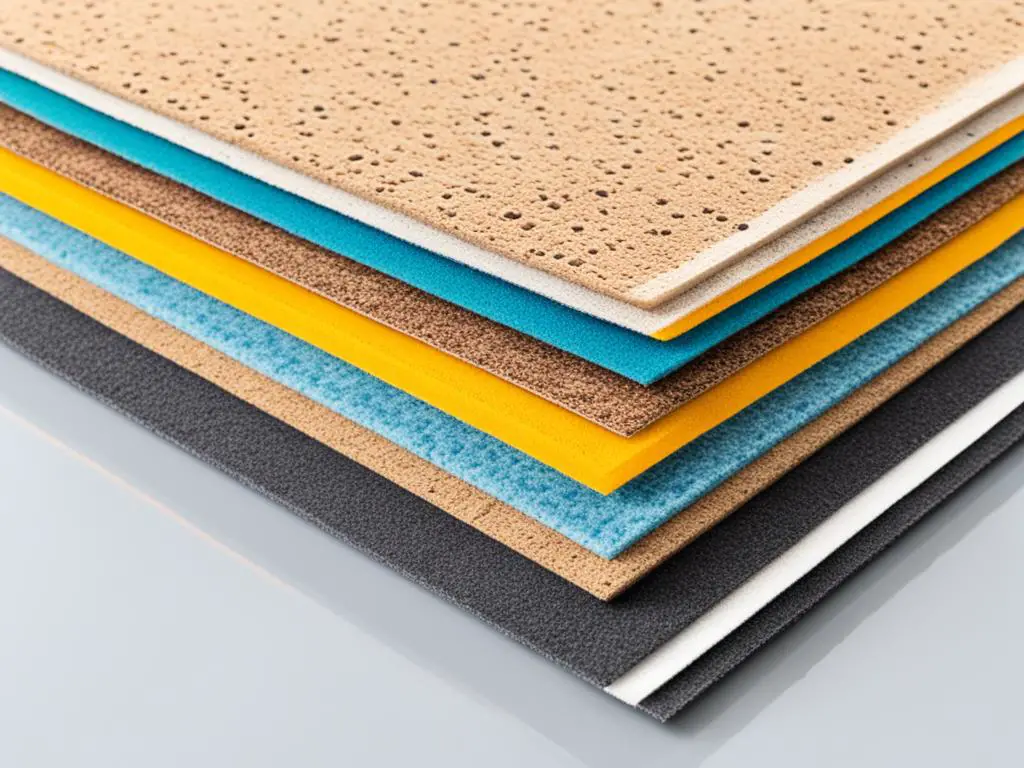
Next, we’ll explore other important considerations for rug waterproofing and how to maintain the water resistance of your waterproofed rugs.
Other Things to Consider for Rug Waterproofing
When waterproofing your rug, there are a few additional factors to keep in mind to ensure optimal results and long-lasting protection. Follow these tips to maintain your waterproofed rugs and prevent slips and bunching:
- Waterproof the underside of the rug: It’s essential to remember that liquid can seep through the entire rug, so make sure to apply a waterproofing solution to both the top and bottom surfaces. This will create a barrier that prevents water absorption and maintains the rug’s integrity.
- Use a waterproof rug pad: Placing a waterproof rug pad underneath your rug provides added protection against water damage. The rug pad acts as a moisture barrier, preventing water from seeping into the flooring underneath. Look for a rug pad made from waterproof materials such as natural rubber or jute.
- Choose a non-slip rug pad: Waterproofed surfaces can sometimes be more slippery, especially when wet. To prevent accidents and ensure safety, opt for a non-slip rug pad to keep your waterproofed rug securely in place. A high-quality rug pad made from natural rubber will provide optimal grip and stability.
- Avoid using carpet tape: While carpet tape may seem like a convenient option for keeping your rug in place, it can leave a sticky residue and lose effectiveness when exposed to moisture. Instead, rely on a reliable rug pad that provides both water protection and anti-slip properties.
By following these tips, you can maintain the water-resistance of your rug, prevent slips and bunching, and ensure that your waterproofed rug remains in excellent condition for years to come.
DIY Waterproofing Techniques for Different Types of Rugs
The process of waterproofing a rug can be applied to both indoor and outdoor rugs. Waterproofing indoor rugs is particularly important in high-moisture areas such as bathrooms and mudrooms to prevent mold and mildew growth. Outdoor rugs, on the other hand, are exposed to various weather conditions including rain and snow, making waterproofing essential for increasing their longevity. Additionally, specific types of rugs, such as acrylic rugs, can also benefit from waterproofing using the same techniques mentioned earlier. The key is to ensure that all areas of the rug are effectively sealed to prevent water absorption.
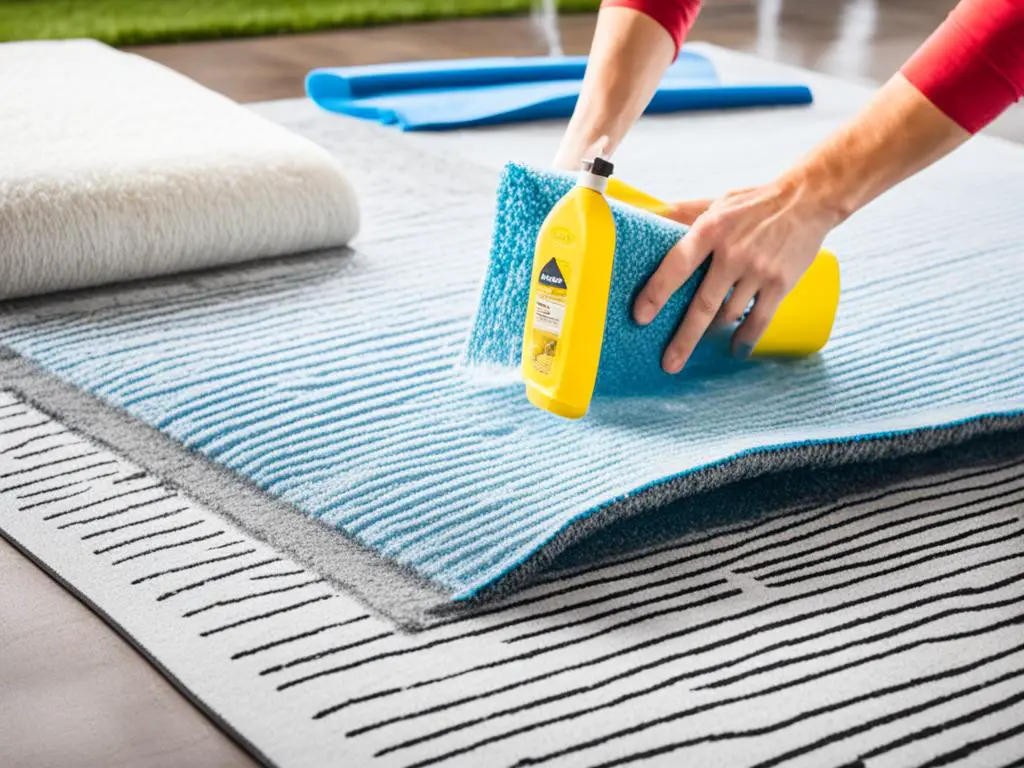
Summary of DIY Waterproofing Techniques
| Type of Rug | Waterproofing Technique |
|---|---|
| Indoor Rugs | – Use a fabric seal spray like Scotchgard or Thompson – Apply a waterproof rug pad to the underside |
| Outdoor Rugs | – Use a fabric seal spray like Scotchgard or Thompson – Apply a waterproof rug pad to the underside |
| Acrylic Rugs | – Use a fabric seal spray like Scotchgard or Thompson – Apply a waterproof rug pad to the underside |
Conclusion
Waterproofing your rug offers a range of benefits that can help preserve its quality and extend its lifespan. By following the DIY rug waterproofing tips provided earlier and using the right products, you can effectively protect your rug from spills, stains, and moisture.
One of the main advantages of waterproofing your rug is the ability to prevent permanent stains. Spills happen, but with a water-resistant rug, you can easily blot away the liquid without worrying about it seeping into the fibers. This keeps your rug looking clean and fresh for longer.
Additionally, waterproofing your rug is an excellent way to safeguard your expensive flooring. Moisture can cause damage to your floors, ranging from discoloration to warping. By waterproofing your rug, you create a protective barrier that prevents water from reaching the floor, thus preserving its integrity.
Whether you have an indoor or outdoor rug, waterproofing is a worthwhile investment. It not only helps maintain the quality and appearance of your rug but also extends its longevity. With simple steps and the right waterproofing products, you can enjoy a water-resistant rug that stands up to spills, stains, and moisture for years to come.
